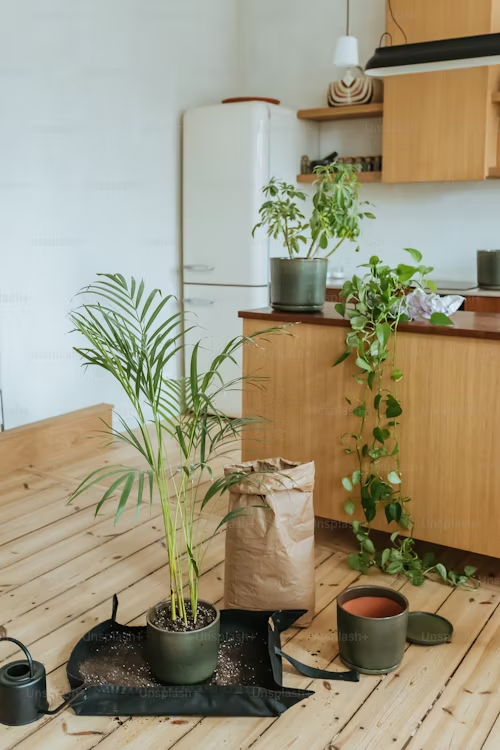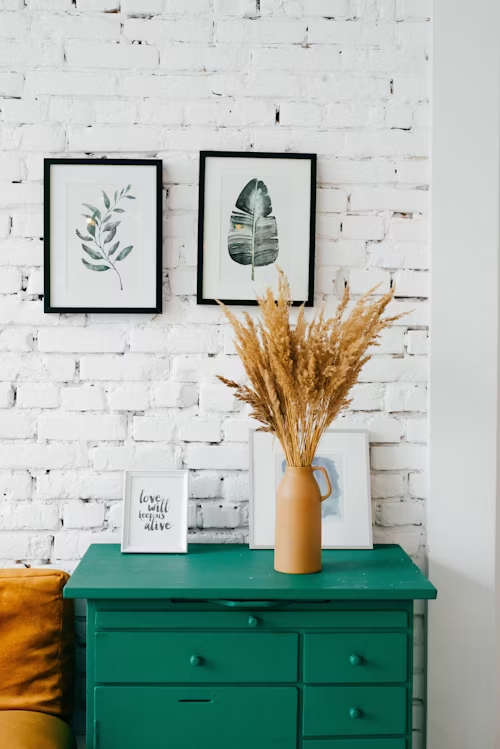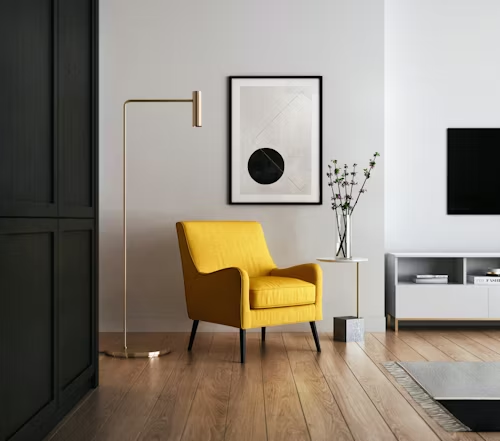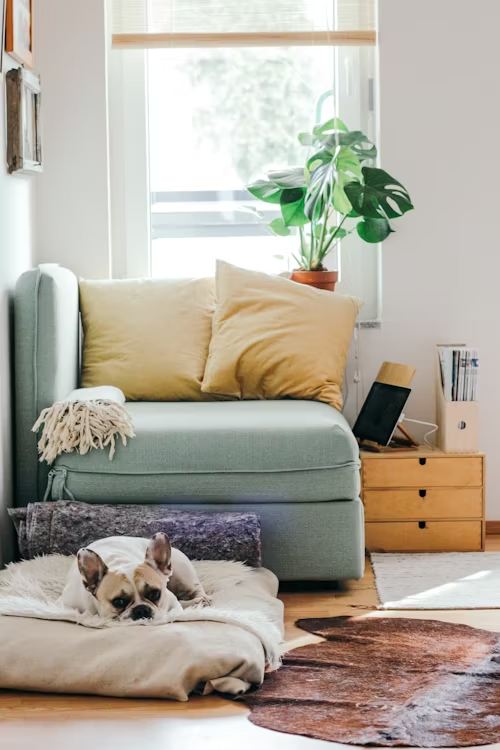Biophilic home accessories are more than just decor; they are a gateway to bringing the beauty of nature indoors. As our lives become increasingly urbanized, the need for natural elements in our living spaces has never been more crucial. By incorporating biophilic design principles, you can create a sanctuary that promotes well-being, reduces stress, and enhances your environmental connection.
Also, imagine waking up to the gentle rustle of leaves, the vibrant colors of seasonal blooms, and the soothing textures of natural materials. This article will explore must-have biophilic home accessories that brighten your space and foster a harmonious relationship with nature. Also, from seasonal plant rotations to eco-friendly materials, discover how you can transform your home into a peaceful retreat that celebrates the beauty of the natural world.
Also, join us as we delve into the essential elements of biophilic design, ensuring your home is not just a place to live but a vibrant ecosystem that nurtures your spirit and enriches your life.
Double the Impact: Using Mirrors to Enhance Plant Aesthetics

Incorporating mirrors into your biophilic home accessories amplifies the beauty of your plants and creates an illusion of a more spacious and airy environment. Also, Mirrors’ strategic placement can significantly enhance your space’s overall aesthetic while promoting a connection with nature.
How Mirrors Create Illusions of Space
Mirrors have a unique ability to reflect light, making rooms feel more extensive and more inviting. When paired with plants, they can create a stunning visual effect that brings the beauty of nature indoors. By reflecting greenery, mirrors can transform a small room into a lush oasis, enhancing the biophilic design principles that encourage natural elements in our living spaces.
Best Locations to Place Mirrors with Plants
To maximize the impact of your biophilic home accessories, consider these ideal locations for mirrors:
- Opposite Windows: A mirror opposite a window can reflect natural light and the beauty of outdoor greenery, creating a vibrant, lively atmosphere.
- Above Plant Shelves: Hanging mirrors above plant displays can draw attention to your greenery, making them a focal point.
- In Corners: Utilizing mirrors in corners can help open up tight spaces, allowing plants to thrive in areas that would otherwise feel cramped.
Choosing the Right Mirror Styles for a Biophilic Look
When selecting mirrors to complement your biophilic home accessories, consider the following styles:
- Natural Frames: Opt for mirrors with wooden or bamboo frames to enhance the organic feel of your space. Natural materials align perfectly with the principles of biophilic design.
- Geometric Shapes: Mirrors in geometric shapes can add a modern touch while still reflecting the natural elements around them.
- Large Statement Mirrors: A large mirror can serve as a striking centerpiece, reflecting multiple plants and creating a lush, green ambiance.
By thoughtfully integrating mirrors into your biophilic home accessories, you can double the impact of your plants while reinforcing your commitment to bringing nature indoors. This simple yet effective approach beautifies your space and promotes well-being and tranquility.
You may also like 5 Best Indoor Plants for Decoration for a Biophilic Home
Low-Fuss, Fast-Growing Plants for Busy Lifestyles Biophilic home accessories

In today’s fast-paced world, incorporating low-fuss, fast-growing plants into your biophilic home accessories can significantly enhance your living space without demanding too much time or attention. These plants beautify your environment, improve air quality, and promote well-being.
Top Low-Maintenance Plants for Beginners
For those new to plant care or with a busy schedule, consider the following low-maintenance options that thrive with minimal effort:
- Pothos (Epipremnum aureum): Known for its trailing vines and heart-shaped leaves, Pothos can grow in various lighting conditions and requires infrequent watering.
- Snake Plant (Sansevieria): This hardy plant is nearly indestructible. It thrives in low light and only needs watering every few weeks.
- ZZ Plant (Zamioculcas zamiifolia): The ZZ plant is perfect for beginners with its glossy leaves. It tolerates neglect and can survive in low-light environments.
Benefits of Fast-Growing Plants in Biophilic Design
Fast-growing plants are particularly beneficial for enhancing your biophilic home accessories. Here’s why:
- Immediate Impact: Fast-growing plants can quickly fill empty spaces and provide instant greenery, making your home feel more vibrant and alive.
- Improved Air Quality: Many fast-growing plants, like the Spider Plant (Chlorophytum comosum), are known for their air-purifying properties, contributing to a healthier indoor environment.
- Encouragement for Home Gardening: Watching plants proliferate can be rewarding and motivating, encouraging you to further engage with your biophilic home accessories.
Care Tips for Keeping Your Plants Thriving
To ensure your low-fuss plants flourish, follow these simple care tips:
- Right Location: Place your plants in areas where they can receive adequate light, indirect or direct, depending on the species.
- Watering Schedule: Establish a watering routine based on each plant’s needs. It’s often better to water underwater than overwater.
- Regular Dusting: Keep leaves clean by gently wiping them with a damp cloth for better light absorption and overall health.
Incorporating low-fuss, fast-growing plants into your biophilic home accessories not only simplifies plant care but also enhances the beauty and tranquility of your space. By choosing the right plants and following simple care practices, you can enjoy the benefits of nature in your home without the stress of high maintenance.
Supplementing Sparse Rooms with Strategic Plant Placement

Incorporating plants into sparse rooms is a fundamental aspect of biophilic design. It enhances your biophilic home accessories while creating a more inviting and lively atmosphere. Strategic plant placement can transform empty or underutilized spaces, bringing nature indoors and promoting well-being.
Identifying Areas in Need of Greenery
Before you start adding plants, take a moment to assess your space. Look for areas that feel bare or lack character, such as:
- Empty Corners: These often-overlooked spots can be perfect for tall plants like Fiddle Leaf Figs or Dracaenas, which draw the eye upward and create a sense of height.
- Bare Shelves: Adding small potted plants or trailing vines can instantly liven up shelves, making them visually appealing and reducing clutter.
- Window Sills: Utilize window sills for smaller plants that thrive in sunlight, such as succulents or herbs, to maximize natural light while enhancing your decor.
Choosing the Right Plants for Different Light Conditions
Understanding the light conditions in your sparse rooms is crucial for selecting the right biophilic home accessories. Here are some plant options based on varying light levels:
- Low Light: Consider plants like the Snake Plant or ZZ Plant, which thrive in low-light environments and require minimal care.
- Medium Light: Peace Lilies and Pothos are excellent choices for rooms with indirect sunlight, adding lush greenery without overwhelming the space.
- Bright Light: For rooms with abundant sunlight, opt for vibrant options like succulents or Spider Plants that can flourish in direct light.
Creative Ways to Incorporate Plants into Sparse Spaces
To make the most of your sparse rooms, consider these creative ideas for plant placement:
- Hanging Planters: Utilize ceiling space by hanging planters to draw the eye upward and add dimension to your room.
- Plant Stands: Use decorative plant stands to elevate plants at varying heights, creating visual interest and making the space feel more dynamic.
- Wall-mounted Planters: Incorporate wall-mounted planters or vertical gardens to save floor space while adding a stunning green display.
Placing plants in sparse rooms can enhance your biophilic home accessories and create a more harmonious living environment. This thoughtful approach beautifies your space and fosters a deeper connection to nature, promoting relaxation and well-being.
Building a Biophilic Wall Unit: A Functional Approach Biophilic home accessories

Creating a biophilic wall unit is an innovative way to integrate nature into your home while maximizing functionality. This approach showcases your favorite plants and is a stylish and practical storage solution, enhancing your biophilic home accessories.
Design Ideas for Incorporating Plants into Furniture
When designing a biophilic wall unit, consider these creative ideas to blend plants with functional furniture seamlessly:
- Shelving with Integrated Planters: Opt for shelves with built-in planters, allowing you to display greenery alongside books and decorative items. This design creates a cohesive look while promoting a connection to nature.
- Vertical Garden Units: Consider wall-mounted units specifically designed for plants. These can house a variety of species, creating a stunning living wall that serves as a focal point in any room.
- Multi-functional Furniture: Use furniture pieces like benches or tables with planter boxes integrated into their design. This saves space and adds a unique touch to your biophilic home accessories.
Materials and Styles for a Biophilic Wall Unit
Choosing the right materials and styles for your wall unit is essential for achieving a biophilic aesthetic. Here are some tips:
- Natural Wood: Incorporate natural wood finishes to evoke a sense of warmth and connection to the outdoors. Reclaimed wood can add character and sustainability to your design.
- Metal Accents: Use metal frames or accents to create a modern look that contrasts beautifully with the organic forms of plants.
- Color Palette: Stick to a neutral color palette with pops of green from your plants to maintain a serene and calming environment.
DIY Tips for Creating Your Own Green Wall Unit
Building your biophilic wall unit can be a rewarding project. Here are some DIY tips to get you started:
- Plan Your Layout: Sketch your design, considering the size and type of plants you want to include. Ensure that your unit has adequate drainage and light exposure for the plants.
- Use Quality Materials: Invest in durable materials that can withstand moisture and support the weight of your plants. Ensure that any planters are correctly sealed to prevent leaks.
- Maintenance Considerations: Design your wall unit with ease of maintenance in mind. Choose plants that require similar care and ensure you can easily access them for watering and pruning.
Building a biophilic wall unit that incorporates plants into your furniture can enhance your biophilic home accessories while creating a functional and visually appealing space. This approach beautifies your home and fosters a deeper connection to nature, enriching your environment.
Seasonal Plant Rotation for Year-Round Freshness Biophilic home accessories

Incorporating seasonal plant rotation into your biophilic home accessories is a fantastic way to maintain a vibrant and dynamic living environment throughout the year. Changing your plants according to the seasons ensures your space remains fresh, inviting, and aligned with nature’s rhythms.
Benefits of Seasonal Plant Rotation
Rotating your plants seasonally offers numerous advantages:
- Visual Interest: Different plants bloom and thrive at various times of the year, providing a constantly evolving aesthetic that keeps your home looking lively and engaging.
- Optimal Growth Conditions: Some plants thrive better in specific seasons. By rotating them, you can ensure each plant is placed in an environment that maximizes its growth potential.
- Connection to Nature: Engaging in seasonal plant rotation fosters a deeper connection to the natural world, reminding you of the changing seasons and their beauty.
Choosing the Right Plants for Each Season
Selecting the right plants for each season is essential for successful rotation. Here are some suggestions:
- Spring: Brighten your space with flowering plants like Geraniums or Pansies. These vibrant blooms can lift your spirits and signify renewal.
- Summer: Opt for lush greenery such as Ferns or Succulents that thrive in warm conditions and require minimal care during the hotter months.
- Fall: Incorporate plants with rich autumn hues, like Chrysanthemums or Asters, to reflect the season’s changing colors and add warmth to your home.
- Winter: Choose hardy plants like Christmas Cactus or Pine varieties that can withstand cooler temperatures while adding a festive touch to your decor.
Tips for Effective Seasonal Rotation
To effectively implement seasonal plant rotation in your biophilic home accessories, consider these tips:
- Create a Rotation Schedule: Plan your rotations ahead of time, marking seasonal changes on your calendar to ensure timely swaps.
- Monitor Plant Health: Keep an eye on the health of your plants throughout the year. If a plant is struggling, it may need to be rotated sooner than planned.
- Store Off-Season Plants Properly: When not in use, store off-season plants in a cool, dry place to maintain their health until they’re ready to be reintroduced to your space.
Also, by embracing seasonal plant rotation, you can enhance your biophilic home accessories and create a fresh, inviting atmosphere all year round. This practice beautifies your home and deepens your appreciation for the natural cycles of life, promoting a sense of tranquility and connection to the environment.
The Role of Color in Biophilic home accessories

Also, color plays a pivotal role in biophilic design, significantly influencing the mood and atmosphere of your space. By thoughtfully incorporating color into your biophilic home accessories, you can create a harmonious environment that enhances well-being and fosters a connection to nature.
Understanding the Psychological Impact of Color
Different colors evoke various emotions and responses, making it essential to choose the right hues for your biophilic design:
- Green: Symbolizing nature and growth, green is the cornerstone of biophilic design. It promotes relaxation, reduces stress, and creates a calming atmosphere.
- Blue: Associated with tranquility and peace, blue can evoke feelings of serenity, making it an excellent choice for spaces dedicated to relaxation or meditation.
- Earth Tones: Colors like browns and beiges bring warmth and comfort, mimicking the natural elements found outdoors and creating a grounded, cozy environment.
- Bright Accents: Incorporating vibrant colors such as yellows or oranges can energize a space, adding a sense of joy and liveliness without overwhelming the senses.
Color Combinations for Biophilic Home Accessories
To create a cohesive look in your home, consider these effective color combinations:
- Green and Earth Tones: Pairing various shades of green with earthy browns and beiges can create a serene and organic feel, perfect for enhancing biophilic home accessories.
- Blue and White: This classic combination evokes a coastal vibe, promoting calmness and freshness while allowing plants to stand out.
- Accent Colors: Use bright accent colors sparingly to highlight specific areas or accessories, ensuring they complement the overall color scheme without overpowering it.
Tips for Integrating Color into Your Space
Here are some practical tips for effectively integrating color into your biophilic home accessories:
- Choose a Focal Point: Also, select a primary color for your space and build around it with complementary hues. This helps create a balanced and visually appealing environment.
- Incorporate Color through Plants: Use your plants’ natural colors to enhance your decor. Consider colorful pots or planters that align with your chosen color palette.
- Use Textiles Wisely: Incorporate colorful textiles, such as cushions or throws, to add softness and warmth to your space while reinforcing your biophilic design.
By understanding and utilizing the role of color in biophilic design, you can enhance your biophilic home accessories and create a vibrant, harmonious living space. This thoughtful approach beautifies your home and promotes emotional well-being and a deeper connection to the natural world.
Eco-Friendly Materials for Biophilic home accessories

Choosing eco-friendly materials for your biophilic home accessories is essential for creating a sustainable living environment that reflects your commitment to nature. By selecting environmentally friendly and aesthetically pleasing materials, you can enhance your space while minimizing your ecological footprint.
Benefits of Using Eco-Friendly Materials
Incorporating eco-friendly materials into your biophilic design offers several advantages:
- Sustainability: Eco-friendly materials are often sourced responsibly, reducing the impact on natural resources and promoting sustainability.
- Healthier Indoor Environment: Many eco-friendly options are free from harmful chemicals and toxins, contributing to better indoor air quality and overall health.
- Aesthetic Appeal: Natural materials often possess unique textures and colors, adding warmth and character to your biophilic home accessories.
Popular Eco-Friendly Materials for Biophilic Design
Here are also some eco-friendly materials to consider when selecting biophilic home accessories:
- Bamboo: Also, known for also its rapid growth and renewability, bamboo is a versatile material used in furniture, flooring, and decorative items. Its natural aesthetic aligns perfectly with biophilic design.
- Reclaimed Wood: Also, using reclaimed wood reduces waste and adds history and charm to your space. Each piece tells a story, making your home accessories unique.
- Natural Fibers: Materials like jute, hemp, and organic cotton are excellent choices for textiles and rugs. They are biodegradable, durable, and contribute to a warm, natural look.
- Cork: As a renewable resource, cork is lightweight, durable, and water-resistant, making it ideal for various applications, from flooring to decorative accents.
Tips for Sourcing Eco-Friendly Materials
To effectively incorporate eco-friendly materials into your biophilic home accessories, consider these tips:
- Research Suppliers: Also, look for suppliers prioritizing sustainability and transparency in their sourcing practices. Certifications like FSC (Forest Stewardship Council) can help identify responsible wood sources.
- Choose Local Products: Supporting local artisans and manufacturers reduces transportation emissions and promotes the local economy.
- Upcycle and Repurpose: Get creative by upcycling old furniture or accessories. This practice reduces waste and allows you to personalize your biophilic home accessories.
Also, by focusing on eco-friendly materials for your biophilic home accessories, you can create a beautiful, sustainable living environment that honors nature. This commitment enhances your space and contributes to a healthier planet, making your home a true reflection of your values.
FAQs
Conclusion
Incorporating biophilic home accessories into your living space is a transformative journey that reconnects you with nature and enhances your overall well-being. Throughout this article, we explored essential elements such as seasonal plant rotation, the psychological impact of color, and the importance of eco-friendly materials. Each component is vital in creating a harmonious environment that nurtures the mind and body.
By thoughtfully selecting biophilic accessories, you can elevate your home into a vibrant sanctuary filled with life, color, and natural beauty. Embracing these practices beautifies your space and fosters a deeper connection to the world around you, promoting sustainability and mindfulness.
Also, you embark on your biophilic design journey, remember that every small change contributes to a more significant impact. Whether you introduce lush greenery, opt for eco-friendly materials, or carefully curate your color palette, your efforts will lead to a more inviting and rejuvenating home.
Transform your space today with these must-have biophilic home accessories and experience the profound benefits of living in harmony with nature. Let your home reflect your values, enhance your well-being, and brighten your everyday life.

